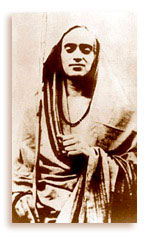 Born in 1925 in Uttar Pradesh to a learned Brahmin family, Swami Rama was raised from early childhood by a great yogi and saint of Bengal who lived in the foothills of the Himalayas. In his youth he practiced the various disciplines of yoga science and philosophy in the traditional monasteries of the Himalayas and studied closely with many spiritual adepts, including Mahatma Gandhi, Sri Aurobindo, and Rabindranath Tagore. He also traveled to Tibet to study with his grandmaster. He received his higher education at Bangalore, Prayaga,Varanasi, and Oxford University, England. At the young age of 24 years he became Shankaracharya of Karvirpitham in South India, succeeding Dr. Kurtkoti to the highest spiritual position in India. During this term he had a tremendous impact on the spiritual customs of that time: he disposed with useless formalities and rituals, made it possible for all segments of society to worship in the temples, and encouraged the instruction of women in meditation. He renounced the dignity and prestige o this high office in 1952 to return to the Himalayas to intensify his meditative practices in the monasteries. After completing a very intense, 11-month meditation and pranayama practice in isolation in a sealed 6′ x 4′ cave with only a single pinpoint of light, he emerged with the determination to serve humanity, particularly to bring the teachings of the East to the West. With the encouragement of his master, Swami Rama began his task by studying Western philosophy and psychology, and teaching Eastern philosophy at many Western universities. He worked as a medical consultant in London and assisted in parapsychological research inMoscow. He then returned toIndia, where he established a clinic and ashram in Rishikesh. He completed his degree at the medical college in Darbhanga in 1960. Later he went to Japan, where he established a major spiritual center. At the request of his master, he came to the United States in 1969.
Born in 1925 in Uttar Pradesh to a learned Brahmin family, Swami Rama was raised from early childhood by a great yogi and saint of Bengal who lived in the foothills of the Himalayas. In his youth he practiced the various disciplines of yoga science and philosophy in the traditional monasteries of the Himalayas and studied closely with many spiritual adepts, including Mahatma Gandhi, Sri Aurobindo, and Rabindranath Tagore. He also traveled to Tibet to study with his grandmaster. He received his higher education at Bangalore, Prayaga,Varanasi, and Oxford University, England. At the young age of 24 years he became Shankaracharya of Karvirpitham in South India, succeeding Dr. Kurtkoti to the highest spiritual position in India. During this term he had a tremendous impact on the spiritual customs of that time: he disposed with useless formalities and rituals, made it possible for all segments of society to worship in the temples, and encouraged the instruction of women in meditation. He renounced the dignity and prestige o this high office in 1952 to return to the Himalayas to intensify his meditative practices in the monasteries. After completing a very intense, 11-month meditation and pranayama practice in isolation in a sealed 6′ x 4′ cave with only a single pinpoint of light, he emerged with the determination to serve humanity, particularly to bring the teachings of the East to the West. With the encouragement of his master, Swami Rama began his task by studying Western philosophy and psychology, and teaching Eastern philosophy at many Western universities. He worked as a medical consultant in London and assisted in parapsychological research inMoscow. He then returned toIndia, where he established a clinic and ashram in Rishikesh. He completed his degree at the medical college in Darbhanga in 1960. Later he went to Japan, where he established a major spiritual center. At the request of his master, he came to the United States in 1969.
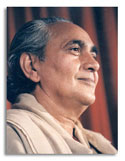 When Swamiji asked his Gurudev for advice on his journey to the West, his master replied: “To obtain freedom from all fear is the first message of the Himalayan sages. The second message is to be aware of the Reality within. Be spontaneous and let yourself become an instrument to teach spirituality without any confusion of religion or culture. All spiritual practices should be verified scientifically, if science has the capacity to do so. Let Providence guide you.” Swamiji followed his master’s instructions, bringing his knowledge and wisdom to the West. His teachings combine Eastern spirituality with modern Western therapies. In an interview with Giovanna Breu for People Magazine, Swamiji said that he lives to teach and share. “American students are open to understanding things. I teach them how to serve selflessly, how to live, and how to be happy and giving.” Even though he has extensive contact with religious thinkers and has a vast knowledge of the spiritual traditions throughout the world, Swamiji does not teach any particular religious doctrine. He is a free thinker, guided by his direct experience and inner wisdom, and he encourages his students to do likewise. “I am a messenger, delivering the wisdom of the Himalayan sages of my tradition. My job is to introduce you to the teacher within.” Swamiji’s deep love for his ancient spiritual tradition is reflected in his life and work. For twenty-five years he has lectured throughout the world in monasteries, churches, universities, and medical schools. His nonsectarian and universal approach towards life and the teachings he imparts are accepted by all religious faiths and communities, making him a binding force between the East and the West.
When Swamiji asked his Gurudev for advice on his journey to the West, his master replied: “To obtain freedom from all fear is the first message of the Himalayan sages. The second message is to be aware of the Reality within. Be spontaneous and let yourself become an instrument to teach spirituality without any confusion of religion or culture. All spiritual practices should be verified scientifically, if science has the capacity to do so. Let Providence guide you.” Swamiji followed his master’s instructions, bringing his knowledge and wisdom to the West. His teachings combine Eastern spirituality with modern Western therapies. In an interview with Giovanna Breu for People Magazine, Swamiji said that he lives to teach and share. “American students are open to understanding things. I teach them how to serve selflessly, how to live, and how to be happy and giving.” Even though he has extensive contact with religious thinkers and has a vast knowledge of the spiritual traditions throughout the world, Swamiji does not teach any particular religious doctrine. He is a free thinker, guided by his direct experience and inner wisdom, and he encourages his students to do likewise. “I am a messenger, delivering the wisdom of the Himalayan sages of my tradition. My job is to introduce you to the teacher within.” Swamiji’s deep love for his ancient spiritual tradition is reflected in his life and work. For twenty-five years he has lectured throughout the world in monasteries, churches, universities, and medical schools. His nonsectarian and universal approach towards life and the teachings he imparts are accepted by all religious faiths and communities, making him a binding force between the East and the West.
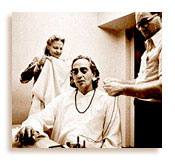 Swami Rama directed his life towards the unification of science and spirituality. His Master suggested that he could help bring Eastern and Western science closer together by working with psychologists and medical doctors who were studying mental and physical phenomena. He came toAmerica upon the instruction of his Master. Dr. Elmer Green of the Menninger Foundation of Topeka, Kansas, invited Swamiji to be a consultant in a research project investigating the voluntary control of involuntary states. Swamiji intended to present his case to science. “I am doing this not to show that I am a magician or a superhuman being, but to show that by controlling the mind one can control one’s bodily functions, including the so-called involuntary muscles such as the heart and lungs. This is done through control of the autonomic nervous system, which is involved in the development of most psychosomatic diseases.” He began the synthesis of Eastern and Western traditions with his research work at the Menninger Foundation. He participated in experiments that helped to revolutionize scientific thinking about the relationship between body and mind. He amazed scientists by his demonstration, under laboratory conditions, of precise conscious control of autonomic physical responses and mental functioning, previously thought to be impossible. Under these scientific conditions, Swami Rama demonstrated his ability t o stop his heart from pumping blood for 17 seconds, to produce a ten degree difference in temperature between different parts of the palm of his hand, and to voluntarily produce and maintain specific brain wave patterns on demand. He first generated brain wave patterns that were predominately characterized by beta waves; then he produced alpha waves, which are generally associated with a relaxed state. Finally, he was able to demonstrate the production of theta waves. Theta waves are associated with unconscious states, in contrast to alpha and beta waves, which are associated with conscious states. While producing theta waves, Swami Rama appeared to be in a state of deep sleep. However, he was able to recall everything that had transpired in the room during that period. Reports of this work have been documented in the World Book Science Annual 1974, the 1973 Encyclopedia Britannica Yearbook of Science, the Time-Life 1973 Nature Science Annual, and numerous other publications. Journals and newspapers across the United States reported on the experiments. Articles appeared in Journal of Transpersonal Psychology (1970), New York Times Magazine (September 1971), Times Weekly (July 1972), Playboy (December 1972), Psychology Today (August 1974), and other popular journals such as Esquire (December 1972), Time (April 1973), Saturday Review (February 1975), and Prevention (June 1978). Swami Rama had been a frequent figure on national television shows in theUnited States, having appeared on such widely viewed programs as “Good Morning America” and the “Phil Donahue Show.” He was the first yogi to subject himself to modern scientific methods of testing his states of consciousness while at the highest level of meditation. When questioned about these feats by an interviewer from The World Book Science Annual, 1974 Science Year, he explained that he could control his heart and blood vessels, and consciously produce various kinds of brain waves at will, because, “All of the body is in the mind, but not all of the mind is in the body.” Through his work with the Menninger Foundation he helped to pioneer the use of biofeedback as a therapeutic modality, to lay the foundation for stress management and holistic health programs, and to generate interest in the human capacity to experience previously unrecognized levels of consciousness.
Swami Rama directed his life towards the unification of science and spirituality. His Master suggested that he could help bring Eastern and Western science closer together by working with psychologists and medical doctors who were studying mental and physical phenomena. He came toAmerica upon the instruction of his Master. Dr. Elmer Green of the Menninger Foundation of Topeka, Kansas, invited Swamiji to be a consultant in a research project investigating the voluntary control of involuntary states. Swamiji intended to present his case to science. “I am doing this not to show that I am a magician or a superhuman being, but to show that by controlling the mind one can control one’s bodily functions, including the so-called involuntary muscles such as the heart and lungs. This is done through control of the autonomic nervous system, which is involved in the development of most psychosomatic diseases.” He began the synthesis of Eastern and Western traditions with his research work at the Menninger Foundation. He participated in experiments that helped to revolutionize scientific thinking about the relationship between body and mind. He amazed scientists by his demonstration, under laboratory conditions, of precise conscious control of autonomic physical responses and mental functioning, previously thought to be impossible. Under these scientific conditions, Swami Rama demonstrated his ability t o stop his heart from pumping blood for 17 seconds, to produce a ten degree difference in temperature between different parts of the palm of his hand, and to voluntarily produce and maintain specific brain wave patterns on demand. He first generated brain wave patterns that were predominately characterized by beta waves; then he produced alpha waves, which are generally associated with a relaxed state. Finally, he was able to demonstrate the production of theta waves. Theta waves are associated with unconscious states, in contrast to alpha and beta waves, which are associated with conscious states. While producing theta waves, Swami Rama appeared to be in a state of deep sleep. However, he was able to recall everything that had transpired in the room during that period. Reports of this work have been documented in the World Book Science Annual 1974, the 1973 Encyclopedia Britannica Yearbook of Science, the Time-Life 1973 Nature Science Annual, and numerous other publications. Journals and newspapers across the United States reported on the experiments. Articles appeared in Journal of Transpersonal Psychology (1970), New York Times Magazine (September 1971), Times Weekly (July 1972), Playboy (December 1972), Psychology Today (August 1974), and other popular journals such as Esquire (December 1972), Time (April 1973), Saturday Review (February 1975), and Prevention (June 1978). Swami Rama had been a frequent figure on national television shows in theUnited States, having appeared on such widely viewed programs as “Good Morning America” and the “Phil Donahue Show.” He was the first yogi to subject himself to modern scientific methods of testing his states of consciousness while at the highest level of meditation. When questioned about these feats by an interviewer from The World Book Science Annual, 1974 Science Year, he explained that he could control his heart and blood vessels, and consciously produce various kinds of brain waves at will, because, “All of the body is in the mind, but not all of the mind is in the body.” Through his work with the Menninger Foundation he helped to pioneer the use of biofeedback as a therapeutic modality, to lay the foundation for stress management and holistic health programs, and to generate interest in the human capacity to experience previously unrecognized levels of consciousness.
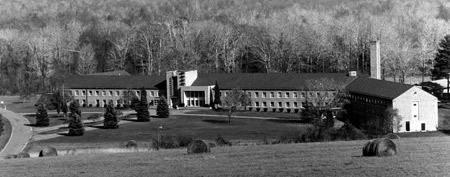 In 1971 Swami Rama founded the Himalayan International Institute of Yoga Science and Philosophy in order to create the means to scientifically verify, document, publish, and teach the experiences of his ancient heritage. He said, “We must build a center of life which will be an important bridge between East and West.” The faculty of the Institute is a team of physicians, psychologists, and spiritual thinkers trained by Swami Rama to synthesize the ancient teachings of the East and the modern technology of the West. Under Swami Rama’s expert guidance, the faculty and staff of the Institute have realized in concrete terms the projects that he proposed. The Institute is a nonprofit organization dedicated to teaching the various aspects of yoga and meditation as a means to foster the personal growth of the individual and the betterment of society. The approach is one that addresses the whole person, body, mind and spirit, in order to lead people toward happier, healthier, and more creative lives. From its humble beginnings in a rented house in the Chicago suburb of Barrington, Illinois, the Himalayan Institute had expanded to include branch centers throughout the States, in addition to several international centers in Germany, England, Curacao, Italy, Malaysia, Singapore, Japan, and Canada. In May, 1975, the Himalayan Institute purchased its first property, located in Glenview,Illinois. In the fall of 1977, the headquarters was moved to its present location in Honesdale,Pennsylvania. The central headquarters is on a 422-acre campus nestled in the rolling hills of the Pocono Mountains in Northeastern Pennsylvania. There, the various educational, therapeutic, research, publishing, and residential faculties of the Institute are surrounded by spectacular views of wooded hills and valleys. Approximately 200 residents and guests can be accommodated in individual rooms. In addition, classrooms and offices, medical facilities, an auditorium, a library, a bookstore, and an import gift shop, are all housed in the main building. The Eleanor N. Dana Research Laboratory and private apartments were located in separate buildings. The grounds included an organic vegetable garden, an orchard and apiary, hiking paths through lovely woodlands, a small lake ideal for swimming and ice skating, abundant countryside for cross country skiing, and recreational facilities for tennis, handball, volleyball, and other outdoor sports. The Himalayan Publishers press and distribution facilities produce numerous books and periodicals on holistic health, psychology, yoga, and other topics related to consciousness and physical well being. The Himalayan Institute also published Yoga International magazine. The Honesdale facility coordinates the Institutes’ branch centers, which serve thousands annually through regular classes and seminars. The innovative programs of the Institute provide a highly respected and reliable source of information and practical training to those interested in self directed change. Self training programs include the Self Transformation Program and the Residential Program. There are also training programs for physicians, biofeedback therapists, psychologists, and other health professionals. The Combined Therapy Program, one of the first inpatient holistic health treatment programs in the country, was a vital part of the work of the Institute. This program had been a model for holistic health care for nearly twenty years. Based on the principle that each individual possesses the responsibility and the tools to regulate his or her own well being, the CRX combined biofeedback, hatha yoga, aerobic exercise, nutrition, breathing and relaxation skills, and meditation and self awareness techniques to provide a unique, innovative, and comprehensive approach to the treatment of chronic disease.
In 1971 Swami Rama founded the Himalayan International Institute of Yoga Science and Philosophy in order to create the means to scientifically verify, document, publish, and teach the experiences of his ancient heritage. He said, “We must build a center of life which will be an important bridge between East and West.” The faculty of the Institute is a team of physicians, psychologists, and spiritual thinkers trained by Swami Rama to synthesize the ancient teachings of the East and the modern technology of the West. Under Swami Rama’s expert guidance, the faculty and staff of the Institute have realized in concrete terms the projects that he proposed. The Institute is a nonprofit organization dedicated to teaching the various aspects of yoga and meditation as a means to foster the personal growth of the individual and the betterment of society. The approach is one that addresses the whole person, body, mind and spirit, in order to lead people toward happier, healthier, and more creative lives. From its humble beginnings in a rented house in the Chicago suburb of Barrington, Illinois, the Himalayan Institute had expanded to include branch centers throughout the States, in addition to several international centers in Germany, England, Curacao, Italy, Malaysia, Singapore, Japan, and Canada. In May, 1975, the Himalayan Institute purchased its first property, located in Glenview,Illinois. In the fall of 1977, the headquarters was moved to its present location in Honesdale,Pennsylvania. The central headquarters is on a 422-acre campus nestled in the rolling hills of the Pocono Mountains in Northeastern Pennsylvania. There, the various educational, therapeutic, research, publishing, and residential faculties of the Institute are surrounded by spectacular views of wooded hills and valleys. Approximately 200 residents and guests can be accommodated in individual rooms. In addition, classrooms and offices, medical facilities, an auditorium, a library, a bookstore, and an import gift shop, are all housed in the main building. The Eleanor N. Dana Research Laboratory and private apartments were located in separate buildings. The grounds included an organic vegetable garden, an orchard and apiary, hiking paths through lovely woodlands, a small lake ideal for swimming and ice skating, abundant countryside for cross country skiing, and recreational facilities for tennis, handball, volleyball, and other outdoor sports. The Himalayan Publishers press and distribution facilities produce numerous books and periodicals on holistic health, psychology, yoga, and other topics related to consciousness and physical well being. The Himalayan Institute also published Yoga International magazine. The Honesdale facility coordinates the Institutes’ branch centers, which serve thousands annually through regular classes and seminars. The innovative programs of the Institute provide a highly respected and reliable source of information and practical training to those interested in self directed change. Self training programs include the Self Transformation Program and the Residential Program. There are also training programs for physicians, biofeedback therapists, psychologists, and other health professionals. The Combined Therapy Program, one of the first inpatient holistic health treatment programs in the country, was a vital part of the work of the Institute. This program had been a model for holistic health care for nearly twenty years. Based on the principle that each individual possesses the responsibility and the tools to regulate his or her own well being, the CRX combined biofeedback, hatha yoga, aerobic exercise, nutrition, breathing and relaxation skills, and meditation and self awareness techniques to provide a unique, innovative, and comprehensive approach to the treatment of chronic disease.
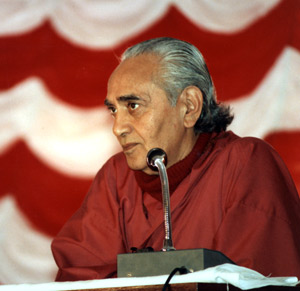 In order to provide a true synthesis of the best of the East and West, there should be a bridge built between these two great orientations. The Institute in India is intended to become a reservoir of ancient wisdom with the potential to benefit all of humanity for generations to come. The Himalayan Institute Hospital Trust (HIHT) was conceived, designed, and orchestrated by Dr. Swami Rama, a yogi, scientist, researcher, writer, and humanitarian. The mission of HIHT is to develop integrated and cost-effective approaches to health care and development for the country as a whole, and for under-served populations worldwide. Swamiji started this project in 1989 with an outpatient clinic of only two rooms. The hospital at HIHT currently has 750 beds and is serving approximately 10 million people of Garhwal, Kumaon and adjoining areas. The hospital includes a Reference Laboratory, Emergency Wing, Operation Theaters, Blood Bank, Eye Bank, Dialysis Unit, I.C.U., C.C.U., Cath Lab., and a state-of-the-art Radiology Department. The newly established Cancer Research Institute is providing radiation therapy in addition to chemotherapy and surgical oncology. The Rural Development Institute is providing healthcare, education, income generation opportunities, water and sanitation programs, adolescent awareness programs and other quality of life improvement programs in the villages of Uttarakhand and adjoining rural areas. The Himalayan Institute of Medical Sciences has now become HIHT University, a deemed university, recognized by the University Grants Commission. The University runs undergraduate (M.B.B.S.) and postgraduate courses (M.D./M.S. and Diploma) in 15 disciplines. The medical faculty is also conducting paramedical degree courses in Medical Laboratory Technology, Radiology & Imaging Technology, and Physiotherapy. The Himalayan College of Nursing offers a four-year B.Sc. program and a 3-year GNM diploma program. The uniqueness of these nursing programs is that the nursing students are provided hands-on training in the community and with the rural population. In keeping with Swamiji’s mission of integration, the hospital runs outpatient Ayurveda and Homeopathy clinics and the Ayurveda Center provides a residential Pancha-karma therapy program for detoxification, rejuvenation and treatment of chronic ailments. The Combined Therapy Program, pioneered by Swami Rama, has been a unique model of holistic health care for more than 30 years. The Combined Therapy Program combines biofeedback, hatha yoga, aerobic exercise, nutrition, breathing, relaxation skills, meditation and other self-awareness techniques.
In order to provide a true synthesis of the best of the East and West, there should be a bridge built between these two great orientations. The Institute in India is intended to become a reservoir of ancient wisdom with the potential to benefit all of humanity for generations to come. The Himalayan Institute Hospital Trust (HIHT) was conceived, designed, and orchestrated by Dr. Swami Rama, a yogi, scientist, researcher, writer, and humanitarian. The mission of HIHT is to develop integrated and cost-effective approaches to health care and development for the country as a whole, and for under-served populations worldwide. Swamiji started this project in 1989 with an outpatient clinic of only two rooms. The hospital at HIHT currently has 750 beds and is serving approximately 10 million people of Garhwal, Kumaon and adjoining areas. The hospital includes a Reference Laboratory, Emergency Wing, Operation Theaters, Blood Bank, Eye Bank, Dialysis Unit, I.C.U., C.C.U., Cath Lab., and a state-of-the-art Radiology Department. The newly established Cancer Research Institute is providing radiation therapy in addition to chemotherapy and surgical oncology. The Rural Development Institute is providing healthcare, education, income generation opportunities, water and sanitation programs, adolescent awareness programs and other quality of life improvement programs in the villages of Uttarakhand and adjoining rural areas. The Himalayan Institute of Medical Sciences has now become HIHT University, a deemed university, recognized by the University Grants Commission. The University runs undergraduate (M.B.B.S.) and postgraduate courses (M.D./M.S. and Diploma) in 15 disciplines. The medical faculty is also conducting paramedical degree courses in Medical Laboratory Technology, Radiology & Imaging Technology, and Physiotherapy. The Himalayan College of Nursing offers a four-year B.Sc. program and a 3-year GNM diploma program. The uniqueness of these nursing programs is that the nursing students are provided hands-on training in the community and with the rural population. In keeping with Swamiji’s mission of integration, the hospital runs outpatient Ayurveda and Homeopathy clinics and the Ayurveda Center provides a residential Pancha-karma therapy program for detoxification, rejuvenation and treatment of chronic ailments. The Combined Therapy Program, pioneered by Swami Rama, has been a unique model of holistic health care for more than 30 years. The Combined Therapy Program combines biofeedback, hatha yoga, aerobic exercise, nutrition, breathing, relaxation skills, meditation and other self-awareness techniques.
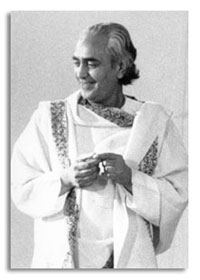 Swami Rama was the author of many books. Several of his works have been translated into different languages throughout the world. His contributions to literature include profound commentaries on such spiritual works as the Bhagavad Gita and the Upanishads; practical guidelines on the application of the ancient wisdom of the East to the fields of psychology and health; a poetic rendition of the Valmiki Ramayana in two volumes; an inspiring account of his experiences with the great teachers who guided his life and spiritual development; and a deeply personal collection of prose poetry of his own spiritual experiences. His works include: Art of Joyful Living, Book of Wisdom: Ishopanishad, A Call to Humanity, Celestial Song/Gobind Geet, Choosing a Path, The Cosmic Drama (Bichitra Natak), Enlightenment without God, Exercise without Movement, Freedom from the Bondage of Karma, Indian Music, volume 1, Inspired Thoughts of Swami Rama, Japji: Meditation in Sikhism, Lectures on Yoga, Life Here and Hereafter, Living with the Himalayan Masters, Love and Family Life, Love Whispers, Meditation and Its Practice, Nitnem, Path of Fire and Light, Vol 1 and 2, Perennial Psychology of the Bhagavad Gita, Sukhamani Sahib, The Valmiki Ramayana Retold in Verse, Vol 1 and 2, Wisdom of the Ancient Sages: Mundaka Upanishad. Swami Rama has also co-authored the following books: Creative Use of Emotion, Meditation in Christianity, Mystical Poems of Kabir, Science of Breath, Yoga and Psychotherapy. Equally adept with a brush or pen, his paintings and poetry reflect the divine spark within. In addition, he was a highly trained and gifted musician. His book, Indian Music, represents one aspect of his efforts to make the Indian system of classical music more easily accessible to the Western world. His unpublished material continues to be published through Swami Rama Centre of the Himalayan Institute Hospital Trust.
Swami Rama was the author of many books. Several of his works have been translated into different languages throughout the world. His contributions to literature include profound commentaries on such spiritual works as the Bhagavad Gita and the Upanishads; practical guidelines on the application of the ancient wisdom of the East to the fields of psychology and health; a poetic rendition of the Valmiki Ramayana in two volumes; an inspiring account of his experiences with the great teachers who guided his life and spiritual development; and a deeply personal collection of prose poetry of his own spiritual experiences. His works include: Art of Joyful Living, Book of Wisdom: Ishopanishad, A Call to Humanity, Celestial Song/Gobind Geet, Choosing a Path, The Cosmic Drama (Bichitra Natak), Enlightenment without God, Exercise without Movement, Freedom from the Bondage of Karma, Indian Music, volume 1, Inspired Thoughts of Swami Rama, Japji: Meditation in Sikhism, Lectures on Yoga, Life Here and Hereafter, Living with the Himalayan Masters, Love and Family Life, Love Whispers, Meditation and Its Practice, Nitnem, Path of Fire and Light, Vol 1 and 2, Perennial Psychology of the Bhagavad Gita, Sukhamani Sahib, The Valmiki Ramayana Retold in Verse, Vol 1 and 2, Wisdom of the Ancient Sages: Mundaka Upanishad. Swami Rama has also co-authored the following books: Creative Use of Emotion, Meditation in Christianity, Mystical Poems of Kabir, Science of Breath, Yoga and Psychotherapy. Equally adept with a brush or pen, his paintings and poetry reflect the divine spark within. In addition, he was a highly trained and gifted musician. His book, Indian Music, represents one aspect of his efforts to make the Indian system of classical music more easily accessible to the Western world. His unpublished material continues to be published through Swami Rama Centre of the Himalayan Institute Hospital Trust.
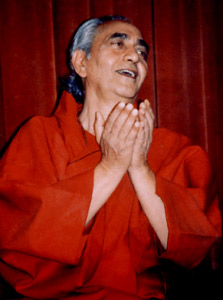 A firm believer in the value of education, Swami Rama provided countless scholarships to needy, deserving students. He established a charitable trust from which many students received scholarships toward college studies and Swamiji built and upgraded to degree level a science college near Lansdowne in the Himalayas. He also founded a library for Garhwal University in Lansdowne Degree College. In addition, he founded two eye clinics. On October 20, 1991 a devastating earthquake struck the foothills of the Himalayan including the Uttarkashi and Chamoli districts, which were the worst hit regions. Hundreds of people were killed, tens of thousands of homes leveled, and major landslides were triggered. Initially there was strong government help for the victims. Tragically, however, those efforts were soon stalled by red tape and politics. The death toll continued to rise and hundreds of thousands of people were without food, water, medical care, clothing, or shelter from the bitter cold. Swamiji actively organized the relief effort, knocking on every door possible to ensure adequate relief and rehabilitation for the earthquake victims. As a result of Swamiji’ s efforts, the Central Government provided firm support to bring relief to the victims. In recognition of his selfless service in India and the United States, as well as around the world, Swamiji received numerous awards and honors. In 1977, he was honored with the Martin Buber Award for his service to humanity; in 1982 he received the Gandhi Community Award. In 1988, the Shiromani Award was bestowed on him for his service to humanity. He was a member of the International Platform Association, the International Writers association of Oxford, England, and the Poetry Society of India. He had also been honored by the Poetry Society of Chicago. He received the Jawaharlal Nehru Award from the NRI Institute inLondon. In 1990 he received an honorary DDW degree (Doctor of Divine Wisdom) from New Seminary. Swami Rama was also included in Who’s Who of Contemporary Authors and Writers, Who’s Who of Men of Achievement, and Who’s Who of International Intellectuals. Due to his excellent contributions to the spiritual literature of Sikhism, he was awarded Saropa from the Guru Nanak Foundation in New Delhi. Each of the many facets of the unique personality of Swami Rama represents only one aspect of a magnificent diamond, whose brilliance humbly reflects the divinity shining within. To describe him as a yogi, scientist, philosopher, humanitarian and mystic poet provides merely a glimpse of the totality of the remarkable individual known as Swami Rama. Having reached the heights of spiritual enlightenment, he also strove with seemingly endless energy to attain perfection in his actions in the external world. His life embodies the human potential to “live in the world, and yet remain above.” Swami Rama consciously dropped his body November 13, 1996 at the Himalayan Institute Hospital Trust.
A firm believer in the value of education, Swami Rama provided countless scholarships to needy, deserving students. He established a charitable trust from which many students received scholarships toward college studies and Swamiji built and upgraded to degree level a science college near Lansdowne in the Himalayas. He also founded a library for Garhwal University in Lansdowne Degree College. In addition, he founded two eye clinics. On October 20, 1991 a devastating earthquake struck the foothills of the Himalayan including the Uttarkashi and Chamoli districts, which were the worst hit regions. Hundreds of people were killed, tens of thousands of homes leveled, and major landslides were triggered. Initially there was strong government help for the victims. Tragically, however, those efforts were soon stalled by red tape and politics. The death toll continued to rise and hundreds of thousands of people were without food, water, medical care, clothing, or shelter from the bitter cold. Swamiji actively organized the relief effort, knocking on every door possible to ensure adequate relief and rehabilitation for the earthquake victims. As a result of Swamiji’ s efforts, the Central Government provided firm support to bring relief to the victims. In recognition of his selfless service in India and the United States, as well as around the world, Swamiji received numerous awards and honors. In 1977, he was honored with the Martin Buber Award for his service to humanity; in 1982 he received the Gandhi Community Award. In 1988, the Shiromani Award was bestowed on him for his service to humanity. He was a member of the International Platform Association, the International Writers association of Oxford, England, and the Poetry Society of India. He had also been honored by the Poetry Society of Chicago. He received the Jawaharlal Nehru Award from the NRI Institute inLondon. In 1990 he received an honorary DDW degree (Doctor of Divine Wisdom) from New Seminary. Swami Rama was also included in Who’s Who of Contemporary Authors and Writers, Who’s Who of Men of Achievement, and Who’s Who of International Intellectuals. Due to his excellent contributions to the spiritual literature of Sikhism, he was awarded Saropa from the Guru Nanak Foundation in New Delhi. Each of the many facets of the unique personality of Swami Rama represents only one aspect of a magnificent diamond, whose brilliance humbly reflects the divinity shining within. To describe him as a yogi, scientist, philosopher, humanitarian and mystic poet provides merely a glimpse of the totality of the remarkable individual known as Swami Rama. Having reached the heights of spiritual enlightenment, he also strove with seemingly endless energy to attain perfection in his actions in the external world. His life embodies the human potential to “live in the world, and yet remain above.” Swami Rama consciously dropped his body November 13, 1996 at the Himalayan Institute Hospital Trust.
